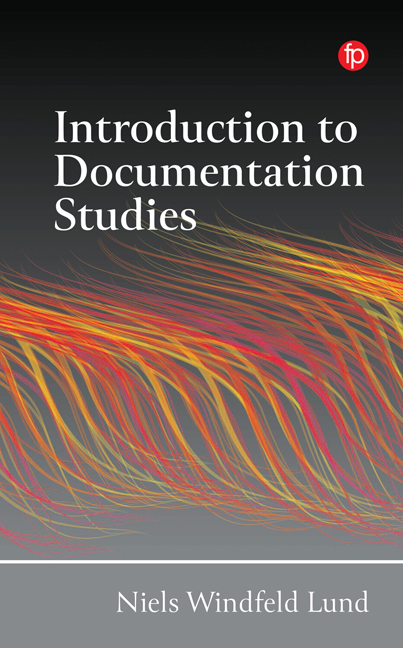 Introduction to Documentation Studies
Introduction to Documentation Studies 6 - Art: The Girls on the Bridge – One Title, Many Works
Published online by Cambridge University Press: 28 March 2024
Summary
Introduction
For art historians the thoughts of the artist are the point of departure, the crucial focus for their studies, as Erwin Panofsky, the founder of art history, stressed in saying:
For it is obvious that historians of philosophy or sculpture are concerned with books and statues not in so far as these books and sculptures exist materially, but in so far as they have a meaning.
(Panofsky, 1955, 14)Nevertheless, even great artists like Edvard Munch, no matter how many good and interesting thoughts they had, needed to document that they were artists by creating physical artworks as well as by showing them in exhibitions and selling them to make a living. That is the crucial point of departure for a documentation scholar who is interested in seeing how an artist like Edvard Munch documented his artwork and managed to become one of the world’s most famous visual artists.
A complementary situation in the visual arts world subsystem
We have seen how Mozart in the late 18th century worked within a transition between two subsystems, moving from the nobility subsystem with artists as servants, to the classical music subsystem with composers as free artists. We saw how Ernest Hemingway in the first half of the 20th century struggled with the subsystem of mass communication and the subsystem of literature. In this chapter we delve into how Edvard Munch, in the same period as Hemingway, finds his way into the new visual arts world subsystem. Until the beginning of the 19th century, professional visual artists did most of their work through commissions from the church, the nobility, and royalty. ‘The free visual artist’ emerged in the 19th century as part of the development of the new visual arts world subsystem parallel to the classical music world subsystem. Together with the free visual artist emerged the concept of the artwork, just as in the classical music world. Finally, we have the emergence of intellectual property rights around 1800. This conceptual triad of the independent artist, the artwork, and the property rights formed the basis for documentation processes in the new visual arts world subsystem. It was also the basis for making the artistic document, the artwork, a commodity with a price and monetary value.
- Type
- Chapter
- Information
- Introduction to Documentation StudiesComplementary Studies of Documentation, Communication and Information, pp. 77 - 90Publisher: FacetPrint publication year: 2024
